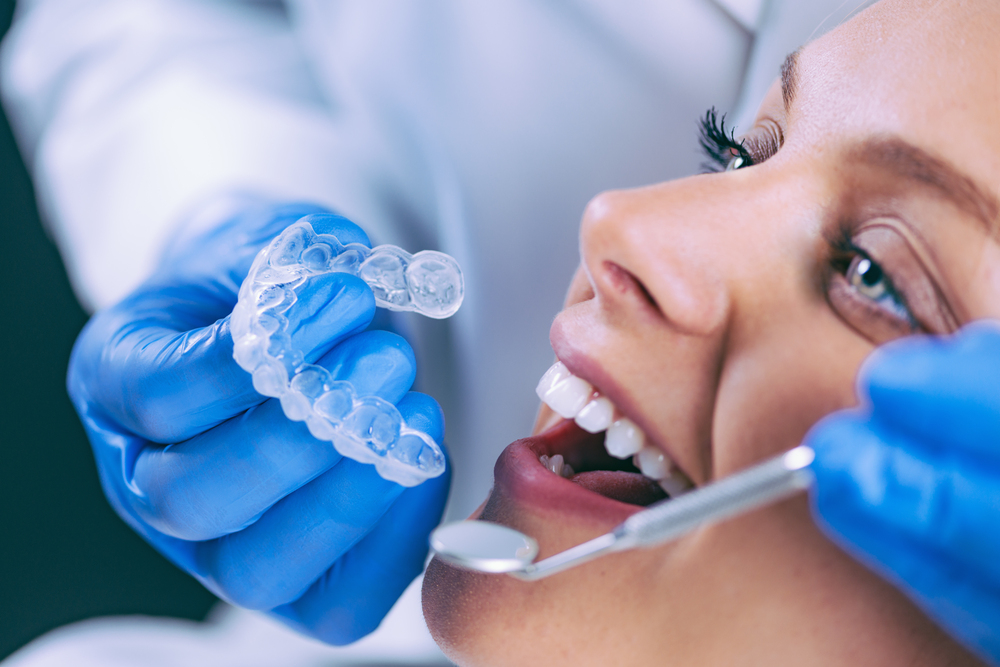The dental care industry has seen significant advancements over the past few decades, with new technologies and treatments continuously emerging to improve patient care. One of the most revolutionary developments in recent years is the introduction and widespread adoption of Invisalign clear aligners. These nearly invisible braces have transformed the way orthodontic treatment is perceived and administered, offering a more aesthetically pleasing and comfortable alternative to traditional metal braces. This article explores how Invisalign is shaping the future of the dental care industry, highlighting the key benefits, technological advancements, and the evolving landscape of dental care service.
The Rise of Invisalign Clear Aligners
Invisalign, developed by Align Technology, was introduced in 1997 and has since become a popular choice for orthodontic treatment. Unlike traditional braces that use metal brackets and wires, Invisalign clear aligners are made of a smooth, BPA-free plastic that is virtually invisible. These aligners are custom-made for each patient, gradually shifting teeth into their desired position over time.
The appeal of Invisalign clear aligners lies in their discreet appearance and the convenience they offer. Patients can remove the aligners when eating, drinking, brushing, and flossing, making it easier to maintain oral hygiene compared to traditional braces. This flexibility has made Invisalign particularly popular among adults and teenagers who are conscious about their appearance and seek a more comfortable orthodontic solution.
Technological Advancements Driving Invisalign
One of the key factors driving the success of Invisalign is the integration of advanced technology in its design and production. The process begins with a digital scan of the patient’s teeth using a 3D scanner. This scan creates a precise digital model of the teeth, which is then used to design a series of custom aligners. Each set of aligners is slightly different, gradually moving the teeth towards the desired alignment.
The use of 3D printing technology has revolutionized the production of Invisalign aligners. This technology allows for the creation of highly accurate and customized aligners, ensuring a perfect fit for each patient. The ability to produce aligners quickly and efficiently has also reduced the overall treatment time, making Invisalign a more attractive option for patients and dental professionals alike.
Additionally, the use of artificial intelligence (AI) and machine learning algorithms in treatment planning has enhanced the precision and effectiveness of Invisalign. These technologies analyze the patient’s dental data and predict the optimal movement of teeth, enabling orthodontists to develop highly personalized treatment plans. This level of customization and accuracy has significantly improved treatment outcomes, contributing to the growing popularity of Invisalign clear aligners.
Impact on the Dental Care Service Landscape
The introduction of Invisalign clear aligners has had a profound impact on the dental care service landscape. Orthodontic practices have had to adapt to the growing demand for Invisalign by investing in new technology and training for their staff. This shift has led to the creation of specialized Invisalign providers who focus exclusively on this type of treatment.
Moreover, the popularity of Invisalign has spurred competition and innovation within the dental care industry. Traditional brace manufacturers have been prompted to improve their products and develop new, more aesthetically pleasing options. This competition has ultimately benefited patients, providing them with a wider range of treatment choices and better overall care.
Invisalign has also played a role in increasing awareness and accessibility of orthodontic treatment. Marketing campaigns by Align Technology have emphasized the benefits of having straight teeth, such as improved oral health and increased self-confidence. This has encouraged more people to seek orthodontic treatment, leading to a rise in the number of patients visiting dental care service providers.
Future Trends and Innovations
As technology continues to advance, the future of Invisalign and the dental care industry looks promising. Researchers and developers are constantly working on improving the design and materials used in clear aligners, making them even more comfortable and effective. Innovations such as smart sensors embedded in aligners could provide real-time data on the progress of treatment, allowing for adjustments to be made more efficiently.
Tele-dentistry is another emerging trend that could further enhance the Invisalign experience. Virtual consultations and remote monitoring of treatment progress can make orthodontic care more accessible to patients in remote areas or those with busy schedules. This approach not only improves convenience but also allows for more frequent check-ins and adjustments, leading to better treatment outcomes.
In addition to technological advancements, the integration of Invisalign treatment with other dental services is becoming more common. Comprehensive dental care service providers are offering packages that combine orthodontic treatment with other cosmetic and restorative procedures, such as teeth whitening and veneers. This holistic approach ensures that patients receive comprehensive care, addressing both the functional and aesthetic aspects of their dental health.
Invisalign clear aligners have undoubtedly revolutionized the dental care industry, offering a modern, comfortable, and effective alternative to traditional braces. The integration of advanced technologies such as 3D printing, AI, and tele-dentistry has further enhanced the appeal and effectiveness of Invisalign. As the demand for these clear aligners continues to grow, the dental care service landscape is evolving to meet the needs of patients seeking innovative and personalized orthodontic solutions. The future of the dental care industry looks bright, with Invisalign leading the way in shaping the smiles of tomorrow.

